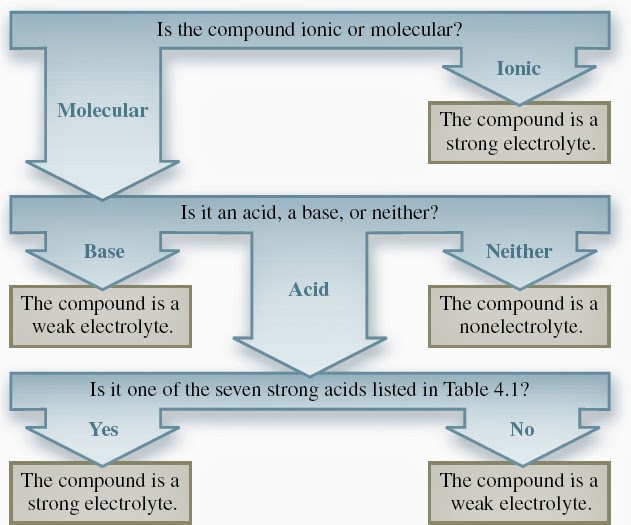Definitions and Notes:
The law of definite proportion : different samples of a given compound always contain the same elements in the same mass ratio .
The law of multiple proportion : for any tow elements can combine to form more than one compound ; the masses ratio of the tow elements is of the smallest possible whole number .
Atom : the basic unit of an element that can enter into chemical combination.
Radiation : the emission and transmission of energy through space in the form of waves.
Hypothesis of Dalton's theory :
- All elements are composed of extremely small particles called atoms .
- Compounds composed of atoms of more than one elements .
- A chemical reaction rearranges atoms in compounds .
The electron's charge to mass ratio discovery , 1.76 x 10^8 C/g , was the Thomson contribution .
The electron's charge discovery , -1.6022 x 10^(-19)C , was the Millikan contribution .
From the Millikan's and Thomson's contributions , the mass of an individual electron is , 9.1x10^-28 g
The discovery of X Rays was a Wilhelm Rontgen contribution .
' Radioactivity ' name is proposed by Marie Curie , a Becquerel's student , to describe the emission and radiation .
Alpha , Beta , and Gamma Rays are produced by the decay of radioactivity .
The discovery of the nucleus was Rutherford contribution .
The discovery of neutron was Chadwick contribution .
The atomic number (Z) is the number of protons in the nucleus .
The mass number (A) is the number of the protons and neutrons in the nucleus .
Isotopes are a different forms of one element caused by the difference in the number of neutrons .
Metal elements are a good conductor of heat and electricity .
Nonmetal elements are a poor conductor of heat and electricity .
Metalloid elements have properties between Metals and Nonmetals .
Molecule : a combination of at least tow atoms held together by electrostatic forces known as covalent chemical bonds .
A molecule can be an element and they are called "homonuclear molecules " like
$$(Ozon "0_3")$$
or a compound " called heteronuclear molecule"like CO
Molecules can be named according to the number of atom they contain " diatomic - polyatomic"
An allotrope is one of two or more distinct forms of an element .
Questions :
1.The elements nitrogen and oxygen can form a variety of different compounds. Two such compounds, NO and N2O4, were decomposed into their constituent elements. One produced 0.8756 g N for every gram of O; the other produced 0.4378 g N for every gram of O. Show that these results are consistent with the law of multiple proportions
$$\frac{N in NO}{N in N_2o_4}=$$
$$\frac{0.8756}{0.4378}=2:1$$
2. Sulfur reacts with fluorine to produce three different compounds. The mass ratio of fluorine to sulfur for each compound is given in the following table:
$$\frac{S_2F_10}{SF_4}\, and \, \frac{SF_6}{SF_4}
$$\frac{2.962}{2.370}=1.25:1=5:4$$
$$\frac{3.555}{2.370}=1.5:1=3:2$$
3.Both FeO and Fe2O3 contain only iron and oxygen. The mass ratio of oxygen to iron for each compound is given in the following table:
$$\frac{Fe_2O_3}{FeO}$$
$$\frac{0.4297}{0.2865}=1.5:1=3:2$$
4.For the two compounds pictured, evaluate the following ratio:
$$ To_ the_ right_ \, : \frac{4}{2}=2:1 $$
$$ To the left \, : frac{3}{1}=3:1$$
$$\frac{2}{3}=2:3$$
5.The diameter of a neutral helium atom is about 1 × 10^2 pm. Suppose that we could line up helium atoms side by side in contact with one another. Approximately how many atoms would it take to make the distance 1 in from end to end?
converting in to pm :
$$1in \times \frac{2.54cm}{1in} \times {10^{10}pm}{1cm}=2.54\times10^{10}pm$$
$$? He Atoms = 2.54\times10^{10}pm \times{1 He atom}{1\times10^2pm}=2.54\times10^{10}$$
6. Roughly speaking, the radius of an atom is about 10,000 times greater than that of its nucleus. If an atom were magnified so that the radius of its nucleus became 2.0 cm, about the size of a marble, what would be the radius of the atom in miles (1 mi = 1609 m)?
$$radius of atom = 10000 radius of nucleus$$
$$radius of atom = 10000 \times 2.cm \times \frac{1m}{100cm} \times \frac{1mi}{1609m}=0.12 mi$$
7.The atomic masses of  (75.53 percent) and
(75.53 percent) and  (24.47 percent) are 34.968 and 36.956 amu, respectively. Calculate the average atomic mass of chlorine. The percentages in parentheses denote the relative abundances.
(24.47 percent) are 34.968 and 36.956 amu, respectively. Calculate the average atomic mass of chlorine. The percentages in parentheses denote the relative abundances.
The average atomic mass = (mass weight of the isotope x it's natural abundance)+(mass weight of the isotope x it's natural abundance )
$$av. \, atmc. \, mss. \, = (35\times0.7535)+(37\times0.2447)=35.45amu$$
8.The atomic masses of 203Tl and 205Tl are 202.972320 and 204.974401 amu, respectively. Calculate the natural abundances of these two isotopes. The average atomic mass of thallium is 204.4 amu
$$(202.972320\times x)+(204.974401 \times (1-x))=204.4amu$$
By solving this equation for "x"
$$x=0.2869$$
The natural abundance of
203Tl = 0.2869 x 100%=28.69%
Then the natural abundance of
205Tl = 100%-28.69=71.31%
9.For each of the following diagrams, determine whether it represents diatomic molecules, polyatomic molecules, molecules that are not compounds, molecules that are compounds, or an elemental form of the substance.
a) Elemental form of a substance , not a compound , poly atomic compound .
b) Polyatomic compound
c) Diatomic compound
10.Write the empirical formulas of the following compounds:
(a) C2N2, (b) C6H6, (c) C9H20, (d) P4O10, (e) B2H6
a)CN
b)CH
c)
C9H20
d)
P2O5
e)
BH3
11.Write the molecular formula of alanine, an amino acid used in protein synthesis. The color codes are black (carbon), blue (nitrogen), red (oxygen), and white (hydrogen)
$$C_3H_7NO_2$$
12.Name the following binary molecular compounds: (a) NCl3, (b) IF7, (c) P4O6, (d) S2Cl2.
a) Nitrogen trichloride
b) Iodine heptafloride
c) Tetraphosphorus hexoxide
d) disulfur dichloride
13.
4.jpg)




















